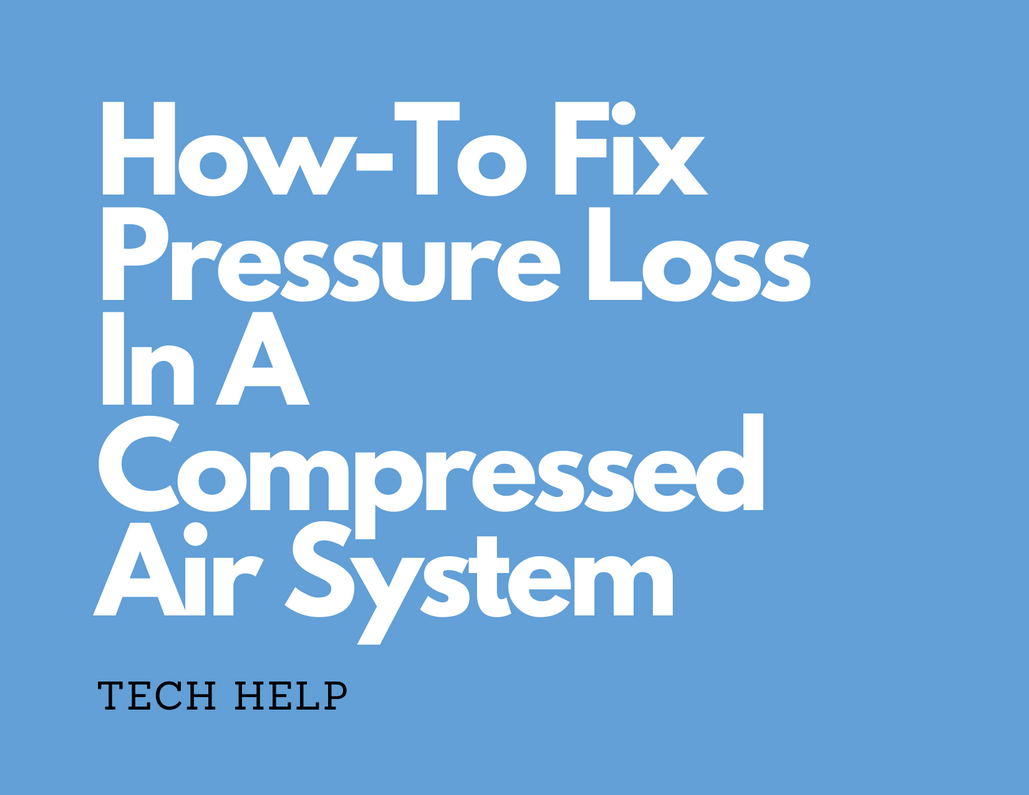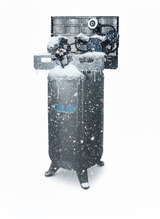Is Your Air Compressor Losing Power? How to Fix Pressure Loss in Your System
Few things are as frustrating as your air tools underperforming due to a lack of power. You've got a perfectly good air compressor, but your impact wrench feels weak, your paint gun sputters, or your sander just doesn't have the oomph it should. The culprit? Pressure loss in your compressed air system.
Pressure loss means the air pressure delivered to your tools is significantly lower than what your compressor is producing. This isn't just an annoyance; it wastes energy, reduces tool lifespan, and makes your work less efficient.
At Master Tool Repair, we understand the critical role of consistent air pressure. This guide will help you identify the common causes of pressure loss in your compressed air system and, more importantly, give you the "how-to" steps to fix them.
Understanding the Essentials: PSI & CFM
Before we dive in, let's quickly clarify two key terms:
- PSI (Pounds per Square Inch): This is the force of the air. It's the number you see on your gauges, indicating the pressure.
- CFM (Cubic Feet per Minute): This is the volume of air. Every air tool has a CFM requirement to operate efficiently, especially under continuous use.
Pressure loss occurs when your system can't deliver the required PSI and CFM to your tool at the point of use.
Common Culprits: Where Does Pressure Disappear?
Pressure loss can happen at various points throughout your compressed air system. Here are the primary suspects:
- Inadequate Piping Size:
- The Problem: This is a major cause. Just like water through a garden hose, air moving through a pipe experiences friction. If the pipe is too small for the volume of air being drawn, pressure drops dramatically.
- Example: A 1-1/4 inch impact wrench might only average 3 CFM over its duty cycle, but during its brief bursts of use, it can demand 55 CFM. If your main air line is smaller than 1 inch, that impact wrench won't get the air it needs, leading to a significant pressure drop at the tool.
- The Fix: Ensure your main air lines and branch lines are adequately sized for the maximum CFM demand of your tools. Consider pipe diameter charts for proper sizing.
- System Components & Accessories:
- The Problem: Every component in your air line after the compressor and tank acts as a potential restriction, contributing to the pressure drop. This includes:
- Refrigerated Air Dryers
- Air Filters (especially clogged ones!)
- Lubricators
- Regulators
- Quick Connect Couplers & Plugs
- Long or Coiled Hoses
- Excessive directional changes (elbows, tees)
- The Fix: Use appropriately sized components. Regularly clean or replace filters. Minimize the use of quick connects and unnecessary bends. Opt for shorter, larger-diameter hoses when possible.
- Air Leaks:
- The Problem: This is often the biggest hidden culprit! Even small leaks at fittings, valves, or hoses can collectively waste a surprising amount of compressed air and cause significant pressure drops throughout the system.
- The Fix: Regularly inspect your entire system for leaks. The "soapy water test" (spraying soapy water on connections and looking for bubbles) is a simple, effective method. Tighten fittings, replace worn seals, and repair or replace leaky hoses and valves.
- Temperature Drop:
- The Problem: As compressed air travels through your delivery system, it naturally cools down. Cooler air is denser, and this cooling causes a natural, albeit usually minor, pressure drop.
- The Fix: While you can't eliminate this entirely, insulating pipes in colder environments can help. Ensure your system's overall design minimizes other pressure loss factors.
- Intermittent High Demand & Lack of Storage:
- The Problem: Some tools (like impact wrenches, sanders, grinders) draw very high CFM for short bursts. If your system or the pipe leading to the tool doesn't have enough immediate air volume, you'll experience a momentary but significant pressure drop.
- The Fix: Supplement your main air tank with point-of-use air receivers (secondary tanks). Placing a smaller air tank close to high-demand tools provides an immediate reservoir of air for those sudden bursts, preventing the main system from being overwhelmed. Larger diameter piping downstream can also act as "air storage."
Your Action Plan to Eliminate Pressure Loss:
- Audit Your System: Start by mapping out your entire compressed air system. Note pipe sizes, component locations, and tool usage.
- Find & Fix Leaks: This is often the cheapest and most effective first step. Don't underestimate small leaks!
- Optimize Pipe Sizing: Consult pipe sizing charts to ensure your main lines and branch lines are adequate for your peak CFM demands. Consider upgrading undersized sections.
- Evaluate Components: Ensure your filters, dryers, regulators, and quick connects are properly sized for your system's flow rate and are not restrictive. Replace old, corroded, or clogged components.
- Add Point-of-Use Storage: For high-demand tools, strategically place smaller secondary air tanks.
- Regular Maintenance: Keep filters clean, drain moisture regularly, and inspect hoses and fittings for wear.
The Benefits of a Properly Pressurized System:
- Optimal Tool Performance: Your air tools will operate at their peak efficiency, getting jobs done faster and better.
- Significant Energy Savings: Your compressor won't have to work as hard or run as long to compensate for lost pressure, leading to lower energy bills.
- Extended Tool & Compressor Lifespan: Reduced stress on components means less wear and tear.
- Increased Productivity: Fewer frustrating interruptions and better results.
Master Tool Repair: Your Partner in Compressed Air Excellence
Don't let pressure loss impact your productivity. At Master Tool Repair, we offer all the high-quality replacement parts and accessories you need to fix and prevent pressure drops in your compressed air system. From air lines and fittings to new filters, regulators, and even auxiliary air tanks – we've got you covered.
Explore our essential parts for optimal air pressure:
A well-maintained compressed air system delivers consistent pressure, saving you money and frustration. By understanding the common causes of pressure loss and taking proactive steps to address them, you can ensure your air tools always perform at their best.
Have questions about optimizing your compressed air system? Our experts at Master Tool Repair are always ready to help you find the right solutions and parts!
Recent Posts
-
Cold-Start Proofing Your Air Compressor: A Practical Guide to Oils, Filtration, and Controls for Winter Reliability
Cold weather exposes weak links in any compressed air system. Thick oil, sluggish controls, and mois …Dec 23, 2025 -
Troubleshooting Your Air Compressor When Your Motor Just Hums, Clicks, or Won't Start
There’s no sound more frustrating in a workshop than the failed attempt of an air compressor to star …Dec 17, 2025 -
Air Compressor Pressure Switches: Beyond the Basics of Adjustment
The Brain of the Beast: Understanding Your Pressure Switch The pressure switch is the unsung hero of …Dec 10, 2025




